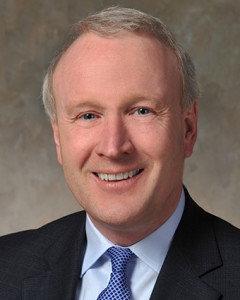Southern New Hampshire industrial market at a market top - Not so fast - by Michael Harrington

Since 2017 I’ve been writing in the New England Real Estate Journal about the Southern New Hampshire industrial market intending to provide the reader with not just statistics and facts but also incorporating my insights based on years of experience advising clients. Hopefully, this article will provide some educational value and trigger further thought which might lead you to a decision to buy, invest, develop, lease, sell or hold your real estate in Southern N.H. With that, two questions come to mind.
1. What is the current state of the Industrial Market in Southern NH?
2. And, the most common question being asked continues to be - Are we at the top? If not, when is it going to turn?
Let me first provide comment on the state of the Southern N.H. industrial market. At the risk of sounding like a broken record, writing something you already know, this market continues to be robust with demand continuing to outpace supply. This has been a common theme since our recovery from the Great Recession and it continues to be the case in 2021. In preparing for this article, I completed an analysis of this market using CoStar Analytics to provide statistical information to back up my “robust” statement. Below, are the results from the survey.
The inventory used for this analysis is of non-flex industrial buildings, 20,000 s/f and larger located in the Seacoast and Southern N.H. markets. The total sample size of the market is approximately 47.4 million s/f. The vacancy rate held firm from the previous year at 4.2%. Market rents on average spiked in 2021 from $8.18/s/f, NNN to $8.84 per s/f showing an increase of 8.1% over the previous year. The market sale price for these properties also dramatically increased to $83 per s/f up from $74 per s/f in 2020. Cap rates also showed a slight year over year decrease dropping to 7.1% from 7.2%. New construction starts projected for the next 12 months are a negligible 260,000 s/f. In short, this is good news for current investors and owner occupants of industrial properties but a challenge for tenants and buyers looking to lease or purchase. New entrants into the market will be faced with higher lease rates, less lease concessions and higher purchase prices.
So, are we at the top? And, when is it going to turn?
To answer those questions, I thought it would be interesting to highlight some of the anecdotal evidence we’re also seeing in the market. Part of what we do as advisors and brokers is to use our past experience, business networking as well as current market stats to give guidance to our clients relative to these questions. (A look into the proverbial crystal ball.)
1. Below are some current anecdotal signs that we might be nearing a top:
2. Top sellers of industrial property are local investors and owners
3. Buyers entering are from outside the market
4. Increasing land sale activity spurring new development
5. Industrial brokers reporting they’re having their best year
6. Market rent and sale prices both above their 10 year averages
7. Vacancy rates well below their 10 year average
The writing this article could very well be an indication of a market top.
Strong market conditions, coupled with mounting anecdotal evidence might be enough to conclude that we are near the top. That being said, it’s good practice to seek guidance from financial experts who study market cycles to confirm or to challenge this information. One such tool, is to look at the Market Cycle Quadrants, developed by financial experts to help determine where we are within a given market cycle. See a summarized table below.
*Market Cycle Quadrants
Phase I – Recovery = declining vacancy, no new construction
Phase II – Expansion = declining vacancy, new construction
Phase III – Hypersupply = Increasing vacancy, new construction
Phase IV – Recession = Increasing vacancy, more completion
This leads me to conclude, even though we have mounting anecdotal evidence backed up by above average historic market conditions pointing to a market top, my experience tells me the Seacoast and Southern NH industrial markets continue to be in Expansion Phase or Phase II of the market cycle. With Phase III (Hypersupply) still several years away. The biggest driver continues to be the lack of new construction coming onto the market. So, for the foreseeable future the tongue in cheek adage of “buy high, sell higher” will continue to ring true. And, buyers and tenants having to make upward adjustments to their acquisition and leasing expectations.
*Source: Muller, Real Estate Finance 1995
Michael Harrington, CRE, CCIM, is principal of Harrington & Company, Manchester, N.H.
The New England Real Estate Journal presents the First Annual Project of the Year Award! Vote today!








.png)